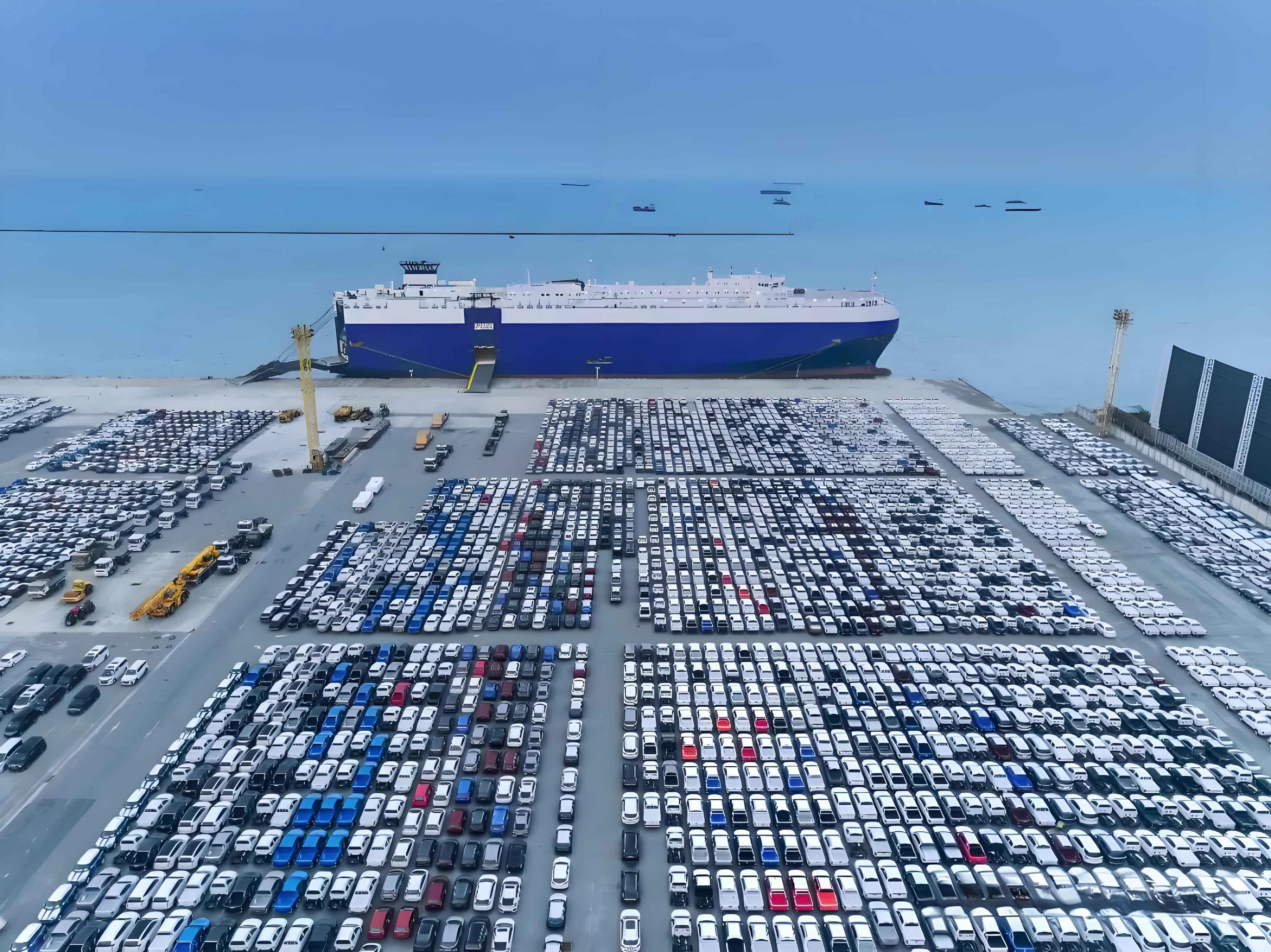In significant milestone for Sino-Japanese trade and the global electric vehicle industry, the Sino-Japanese liner “Xin Jian Zhen” recently embarked on its maiden voyage carrying a batch of Chinese-made electric vehicles to Japan. This landmark shipment not only underscores China’s growing prowess in electric vehicle manufacturing but also highlights the evolving trade dynamics between the two economic powerhouses.

On June 3, the “Xin Jian Zhen” docked at the Jungong Road Terminal of Shanghai Port, where it underwent loading procedures under the supervision of the Wusong Customs District, part of Shanghai Customs. In a carefully coordinated operation, twenty electric vehicles were driven into the ship’s cargo hold before the vessel set sail for Osaka, Japan. This event marks the first time the liner has carried a consolidated batch of electric vehicles destined for the Japanese market.
The “Xin Jian Zhen” is a versatile roll-on/roll-off vessel capable of carrying a diverse array of cargo, including passenger vehicles, trucks, and containers. With a capacity of twenty electric vehicles per voyage, the ship is poised to play a crucial role in facilitating the export of Chinese electric vehicles to Japan. According to plans, a total of 400 electric vehicles are scheduled to be transported via the Sino-Japanese liner service in the coming months, with 85 electric vehicles expected to be shipped in June alone.
The successful execution of this shipment was made possible through the efficient coordination between customs authorities and the operating company. Officials from the Wusong Customs District implemented a joint response mechanism that integrated regulatory procedures seamlessly into the logistics chain, ensuring what was described as “zero delay” in the export process. This approach not only streamlined operations but also reduced indirect costs for exporters, making the liner service an attractive option for shipping high-value goods like electric vehicles.
A representative from China-Japan International Ferry Co., Ltd., the operator of the “Xin Jian Zhen,” emphasized the reliability of the liner service and the efficiency of the customs clearance process. The shift from traditional cargo, such as textiles, to advanced products like electric vehicles reflects a broader transformation in the structure of trade between China and Japan. The inclusion of electric vehicles as a key export commodity opens new avenues for growth and cooperation along the shipping route.
The growing volume of trade handled by the Wusong Customs District further illustrates this trend. In the first five months of the year, the district oversaw the processing of 8,110 TEUs (twenty-foot equivalent units) of import and export goods via the Sino-Japanese liner service, representing a year-on-year increase of 12.55%. This growth is indicative of strengthening economic ties and the increasing demand for efficient logistics solutions between the two nations.
China’s electric vehicle industry has been rapidly expanding, with manufacturers gaining recognition for innovation, quality, and competitive pricing. The ability to export electric vehicles in significant quantities to a mature market like Japan signals a new chapter in the global electric vehicle landscape. It demonstrates the international competitiveness of Chinese electric vehicle brands and their potential to reshape supply chains and consumer preferences worldwide.
The deployment of the “Xin Jian Zhen” for electric vehicle exports is also symbolic of the historical and economic connections between China and Japan. Just as the vessel’s namesake, the historic monk Jianzhen, once fostered cultural exchange between the two nations, the modern liner now facilitates commercial exchange, carrying products that represent China’s technological advancement and industrial evolution.
Looking ahead, the continued use of roll-on/roll-off shipping for electric vehicles offers a sustainable and efficient transport alternative. With careful planning and enhanced cooperation between customs and logistics providers, this model could be replicated in other regions, supporting the global transition toward electric mobility.
The journey of the “Xin Jian Zhen” is more than a commercial shipment—it is a statement of intent. It signals China’s determined entry into the international electric vehicle market and Japan’s openness to embracing electric vehicle innovations from abroad. As more electric vehicles make their way across the sea, they carry with them the promise of a greener future and a more interconnected global economy.
In the coming years, the electric vehicle sector is expected to continue its rapid growth, with exports playing an increasingly important role in the strategies of manufacturers and policymakers alike. The success of initiatives such as the “Xin Jian Zhen” electric vehicle shipments will likely inspire further collaboration and investment in supporting infrastructure, from ports and customs facilities to international trade agreements.
As the world watches the rise of electric vehicles from China, the seamless coordination between government agencies and private enterprises will remain essential. The integration of smart logistics, digital customs clearance, and sustainable transport methods will define the next era of global trade—and electric vehicles are sure to be at the forefront.
This shipment is just the beginning. With expanding production capacity, technological innovation, and strategic partnerships, Chinese electric vehicle manufacturers are well-positioned to accelerate their global outreach. And as vessels like the “Xin Jian Zhen” continue to sail, they will serve as vital links in a chain that connects factories to foreign markets, driving forward the future of transportation—one electric vehicle at a time.